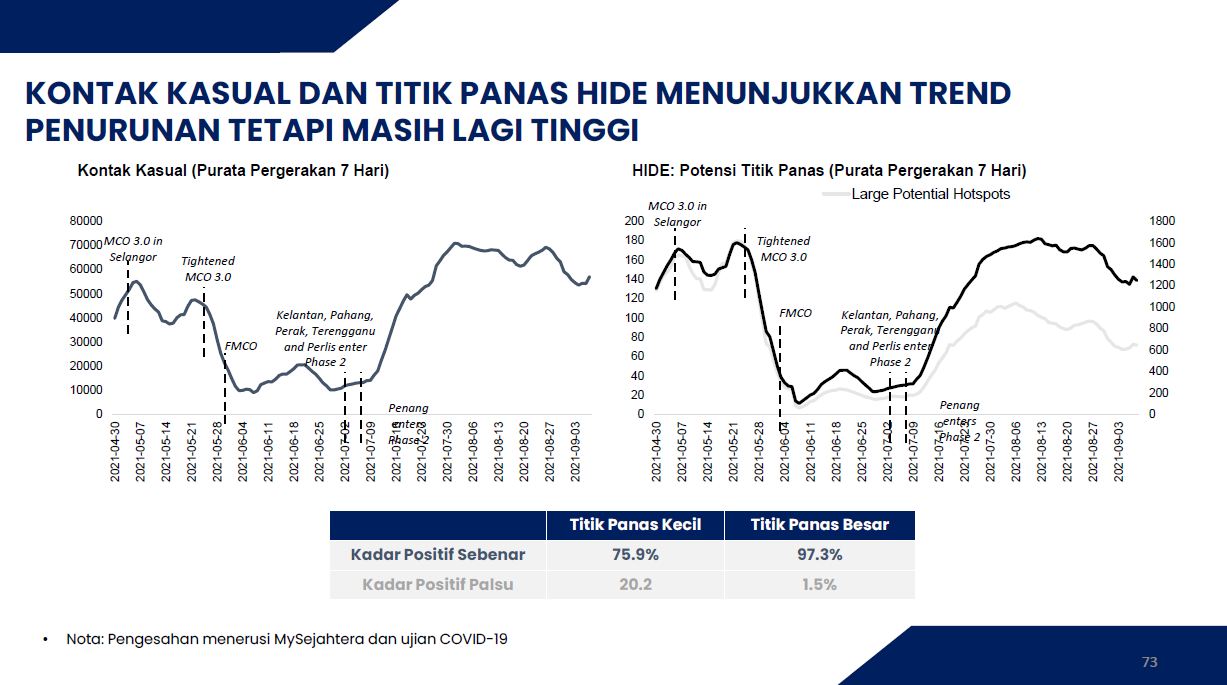KUALA LUMPUR, Nov 9 — Local authorities have been paying visits to premises identified as potential Covid-19 hotspots by the Hotspots Identification for Dynamic Engagement (HIDE) system, a predictive analytics tool.
Health Minister Khairy Jamaluddin said the government continues to utilise the HIDE system by doing backward and forward contact tracing based on a person’s check-in records with the MySejahtera app. He said as of September 12, there were 761 total potential HIDE hotspots — 721 small and 40 large hotspots.
Large hotspots are defined as areas with potential clusters of at least 50 Covid-19 transmissions, while small hotspots have potentially one to 49 coronavirus transmissions.
“The question is, Mr Chairman, [is] whether or not we still use HIDE? Yes, we still use HIDE, but we do not publish it. Rather we… once we have the list, we will meet with the premise owner and we will conduct an intervention with them-lah,” Khairy told Dewan Rakyat’s health, science and innovation special select committee in a meeting on September 14.
Transcripts of the meeting were published in the special committee’s “Transitioning from Pandemic to Endemic Covid-19 Safely and Sustainably” report tabled in Parliament last week.
Khairy said interventions are not only carried at shopping centres, but also at factories.
“So, I think again, compliance-lah, Mr Chairman. Once we intervene, they have to follow all the compliance,” the minister said in response to a question from committee chair Bandar Kuching MP Dr Kelvin Yii on why factory clusters continue to report high numbers.
According to Khairy’s presentation slides during the meeting, HIDE identified about 60,000 casual contacts on September 3, based on a seven-day moving average.
The trend of Covid-19 casual contacts and potential hotspots showed a downward trend from August, albeit still high, according to the slide.
HIDE records 75.9 per cent and 97.3 per cent true positive rates for small and large hotspots respectively, indicating high predictability.
The government only published HIDE’s first list of potential Covid-19 hotspots last May that primarily comprised major shopping centres in the Klang Valley, but did not release further lists amid criticism of unfair blacklisting over projections, and not actual occurrences of coronavirus transmission.








